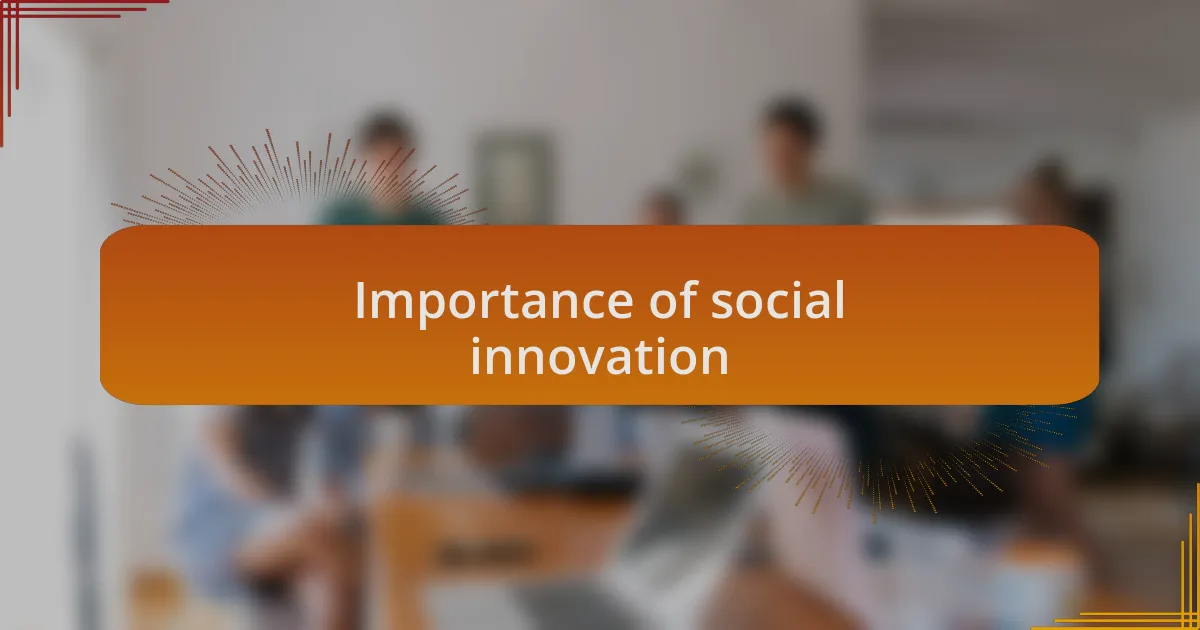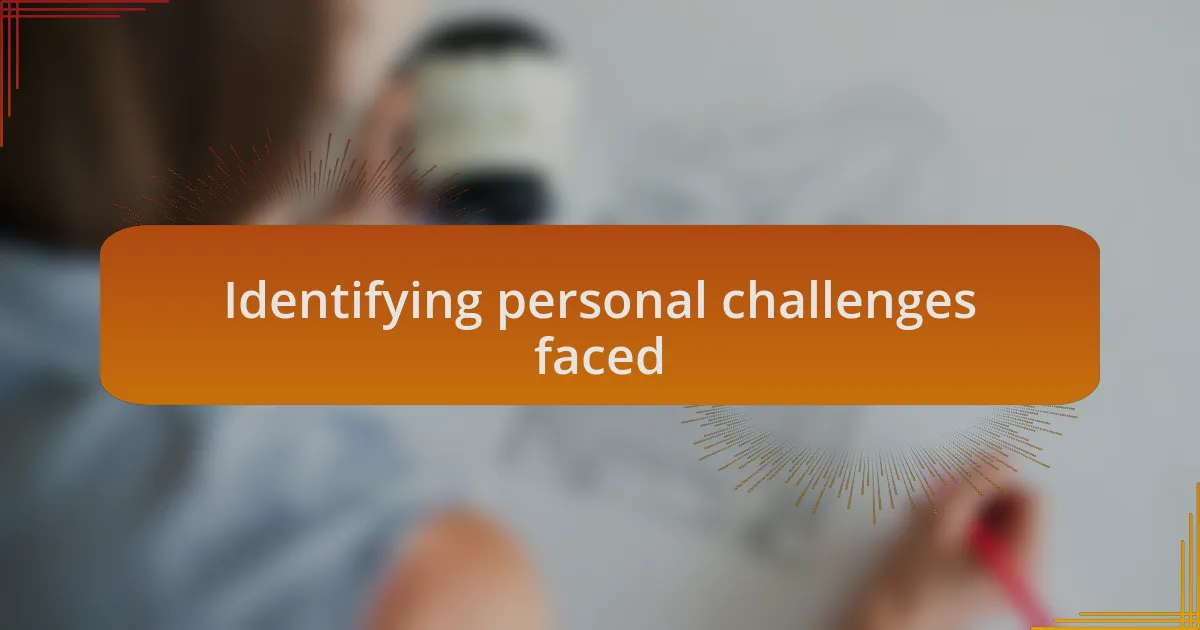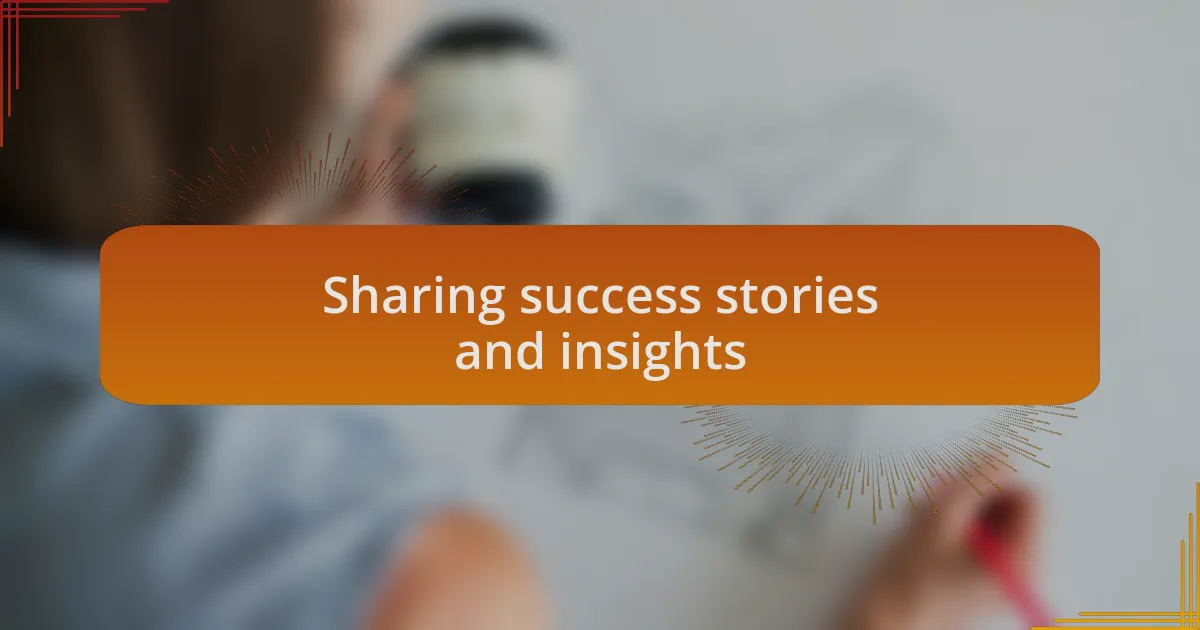Key takeaways:
- Engagement barriers arise from lack of trust, feelings of exclusion, and complex systems that deter participation.
- Social innovation addresses social issues and empowers marginalized voices, fostering collaboration and community responsibility.
- Key strategies for community engagement include active listening, utilizing local champions, and creating interactive experiences.
- Overcoming personal challenges, such as confidence and time management, is essential for meaningful community participation.

Understanding engagement barriers
Engagement barriers often stem from a lack of trust or understanding between a community and its members. I remember attending a local workshop where participants seemed hesitant to share their ideas. It struck me that if they didn’t feel a connection to the facilitators or the purpose, their voices would remain unheard. How can we expect meaningful dialogue if the foundation of trust is shaky?
Another common barrier is the feeling of exclusion. In my experience, when people perceive that an initiative is meant for “experts” or a select few, they disengage. I’ve seen this firsthand in various social settings; individuals would rather withdraw than risk feeling inadequate. What if we could create environments where everyone feels valued, regardless of their background?
Lastly, the frustration of overly complex systems can stifle participation. I once encountered a social platform designed for collaboration that was so convoluted, it deterred me from using it. It made me wonder, are we inadvertently creating walls that keep people out? Simplifying processes and ensuring accessibility can dismantle these barriers, inviting more voices into the conversation.

Importance of social innovation
Social innovation is crucial because it addresses pressing social issues in a fresh, transformative manner. I recall a time when our community faced food insecurity, and traditional methods fell short. A group of local entrepreneurs came together, leveraging technology to create a platform that connected surplus food from restaurants directly to those in need. This not only reduced waste but also fostered a sense of community responsibility.
Furthermore, social innovation empowers marginalized voices that are often overlooked. I’ve participated in initiatives where locals created art to share their stories and experiences. When these individuals took center stage, it was remarkable how their perspectives shifted the narrative and encouraged others to engage. Have you ever noticed the difference it makes when people feel seen and heard?
Finally, the importance of social innovation lies in its ability to inspire collaboration across sectors. In my experience organizing a community project, I found that bringing together local government, businesses, and grassroots organizations led to innovative solutions that no single group could have achieved alone. Isn’t it fascinating how combining diverse strengths can lead to impactful change?

Key strategies for community engagement
To truly engage a community, I believe the first key strategy is listening actively. During a community forum I once attended, I noticed how the facilitator encouraged everyone to share their thoughts, regardless of their background. This openness transformed the atmosphere, as people felt valued and motivated to contribute. Have you ever been in a situation where simply being heard made a significant difference in how you felt about participating?
Another effective strategy is leveraging local champions who can bridge gaps between organizations and community members. I recall collaborating with a neighborhood leader who was deeply respected. By involving them in our planning, we gained invaluable insights and built trust. It’s incredible how one person’s influence can draw in a crowd, isn’t it? Their stories resonated with others, sparking interest and engagement that we hadn’t anticipated.
Lastly, creating interactive and enjoyable experiences can significantly elevate community participation. I once helped organize a hands-on workshop where participants could express their ideas through art. The energy was palpable, as creativity broke down barriers. It made me realize how important it is to create spaces where people can connect and collaborate naturally. Have you considered how fun activities can lead to deeper engagement? It’s all about fostering an environment where everyone feels welcome and inspired to contribute.

Identifying personal challenges faced
Recognizing my own hurdles was an eye-opening experience. I often found myself hesitating to voice my opinions in group settings, worried that my perspective might not add value. Have you ever felt that nagging doubt about sharing your thoughts? It made me realize that my confidence was a barrier, not just to my own engagement but potentially for others who felt the same way.
Another challenge I faced was understanding diverse viewpoints. During a project, I struggled to connect with individuals from backgrounds vastly different from my own. This discomfort made me question whether I could truly relate to their experiences. How can we effectively engage with those who have different lived experiences? My journey taught me that education and genuine curiosity can bridge these gaps, allowing us to form meaningful connections.
Additionally, time constraints often stood in my way. Balancing personal commitments while trying to engage deeply with community initiatives drained my energy. I often wondered if I could do it all without compromising on quality. This led me to learn the importance of prioritization and seeking support, as collaboration can lighten the load and enhance community engagement.

Personal experiences with overcoming barriers
Overcoming my fear of sharing ideas in a group was a transformative experience. I remember a pivotal moment during a community meeting when I finally mustered the courage to voice my opinion about a project. My heart raced, but to my surprise, my input sparked a lively discussion, showing me that my fears were unfounded. Have you ever hesitated to speak up, only to realize later how much your perspective could influence others?
Connecting with individuals from different backgrounds was another barrier I had to tackle head-on. I vividly recall attending a workshop where I felt completely out of my comfort zone, surrounded by people whose life stories were so different from my own. Instead of retreating into silence, I decided to listen actively, asking questions that opened doors to their experiences. This not only enriched my understanding but also turned an intimidating situation into a rewarding exchange. Doesn’t it feel empowering to embrace vulnerability and learn from others along the way?
In the midst of my community engagement efforts, time management became a significant ally. I vividly recall a week where I had back-to-back commitments, juggling work, family, and volunteer activities. It felt overwhelming, but after some reflection, I realized that saying “no” when necessary was key. I learned to delegate tasks and focus on what truly mattered, allowing me to engage authentically without burning out. Have you had to find balance in your own pursuits? That realization of prioritization was a game changer for not just my involvement but also for sustaining it in the long run.

Practical steps to enhance participation
One effective way to enhance participation is to create a welcoming environment where everyone feels valued. I remember organizing a small brainstorming session for a community initiative. Before we began, I took a few moments to share a personal story that connected to our topic. This simple act not only broke the ice but encouraged others to open up as well. Have you ever noticed how a shared experience can foster a sense of belonging?
Another practical step involves utilizing technology to facilitate engagement. During a recent project, I introduced an online platform where participants could share their thoughts anonymously. This encouraged many who were initially hesitant to participate. I found that once people had the opportunity to express themselves without the fear of judgment, they became more engaged in the discussions. Isn’t it amazing how a little bit of privacy can lead to a wealth of ideas?
Lastly, providing regular feedback can significantly boost engagement levels. In one of my initiatives, I committed to sharing updates and recognizing contributions publicly. I remember receiving messages from participants who felt appreciated and motivated to contribute even more. When was the last time you felt valued for your input? Making an effort to acknowledge participation not only strengthens community ties but also encourages ongoing involvement.

Sharing success stories and insights
Sharing success stories and insights can significantly uplift a community’s spirit and involvement. I recall a time when I shared the story of a fellow community member who transformed her passion for gardening into a neighborhood garden project. It wasn’t just about the flowers; it was about fostering relationships among neighbors who never spoke before. The moment she shared her journey, I could feel the enthusiasm in the room rise—it sparked others to think about how they, too, could make a difference.
On another occasion, I hosted a storytelling session where various participants revealed their struggles and triumphs. One shared how he overcame significant barriers to clean up a local park. His story resonated deeply with many attendees, as they saw themselves in his challenges. It made me realize that when we voice our experiences, we not only validate our own feelings but also inspire others to take action. Wouldn’t it be powerful if everyone felt encouraged to share their journey, knowing it could ignite change?
I also believe in the impact of visual storytelling. Once, I created a simple video montage showcasing the milestones of a social initiative I participated in. As we watched the clips together, there was a palpable sense of pride among participants. Seeing our collective achievements brought back memories of the hard work and dedication put forth, reminding us why we engaged in the first place. Have you ever witnessed how a shared vision can unify a group? Those moments of connection are vital for maintaining momentum in any initiative.